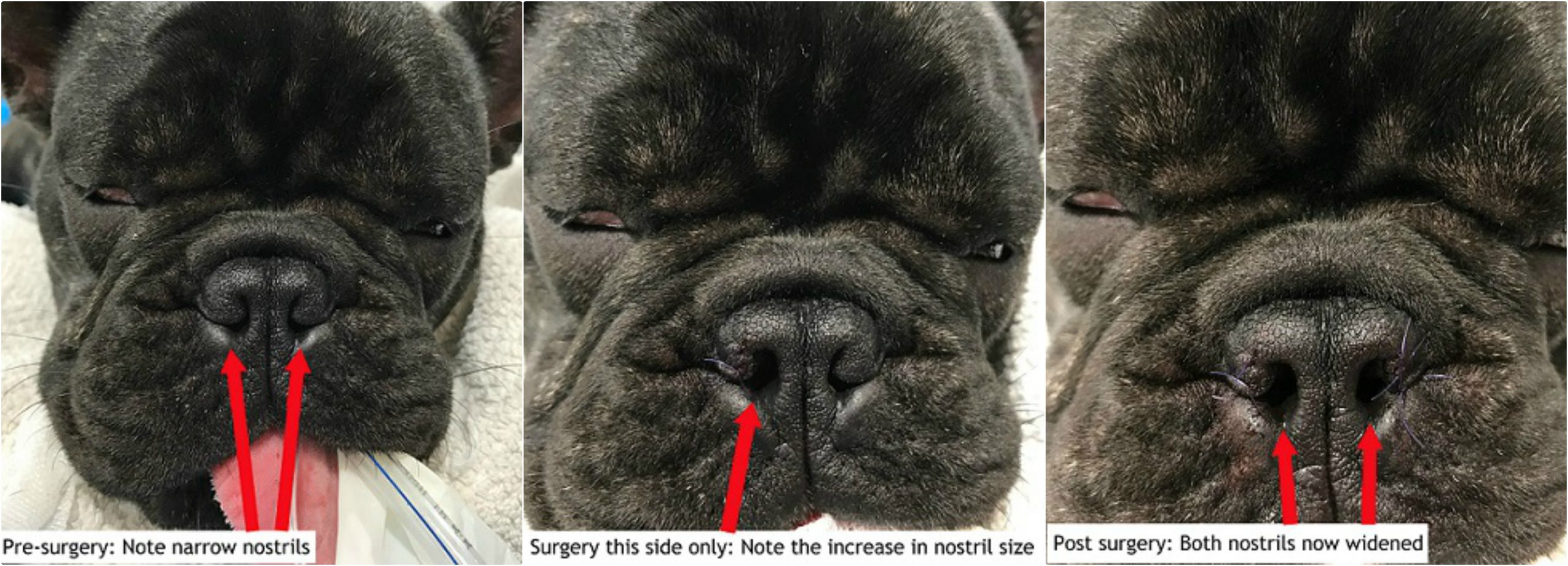How is the surgery done and how invasive is it?
Performed early by an experienced surgeon it is non traumatic, relatively non invasive and recovery is very quick and easy. Done later with secondary changes recovery can become a little rough for a few days to possibly a few weeks for those being done later in life when breathing problems are really progressing.
Stenotic Nares
- A wedge of tissue is removed from the area next to the nostril and sutured close.
- Surgery does not change the shape of the nose itself, and the result is cosmetically pleasing if the correct method is utilised. There are a few techniques that can be done.
Elongated Soft Palate
There are two methods to shorten soft palates.
- The common method is to resect with surgical scissors and over-sew the end of the palate. A more modern and better method is called ligasure (a state of the art electrosurgical vessel sealing device), which is a surgical unit that resects the palate without the need of suturing, and takes a fraction of the time (hence your dog is under anaesthesia for a lot less time). Recovery is more comfortable without dissolving sutures in place for some months. Ligasure also minimises surgical trauma and swelling that suturing may cause, also improving recovery. Southern Animal Health is one of the few clinics that use Ligasure for palate shortening. Although suturing is still absolutely fine, it is a question you can ask – whether ligasure or suturing is used.
- Thick palates that need to be thinned are dealt with differently. A procedure called a folding palatoplasty is used, during which the thickened palatine muscle is excised, and the remaining part of the soft palate is folded forward and sutured. The end result is not only a shorter palate, but a much thinner one which allows for significantly easier breathing again.



